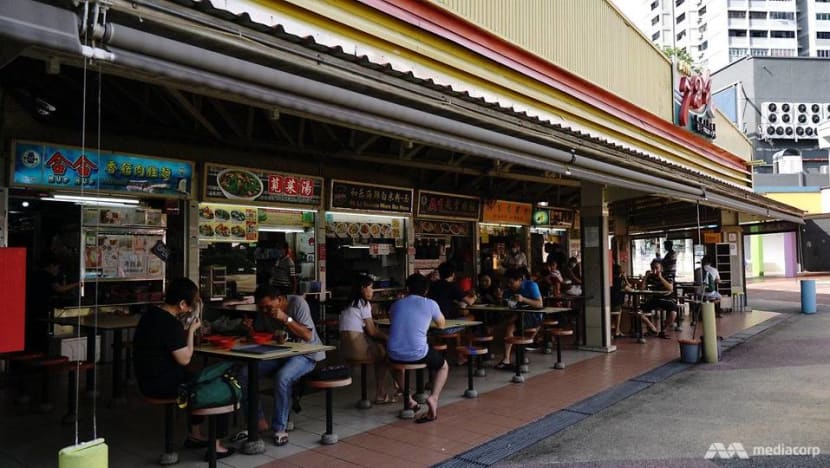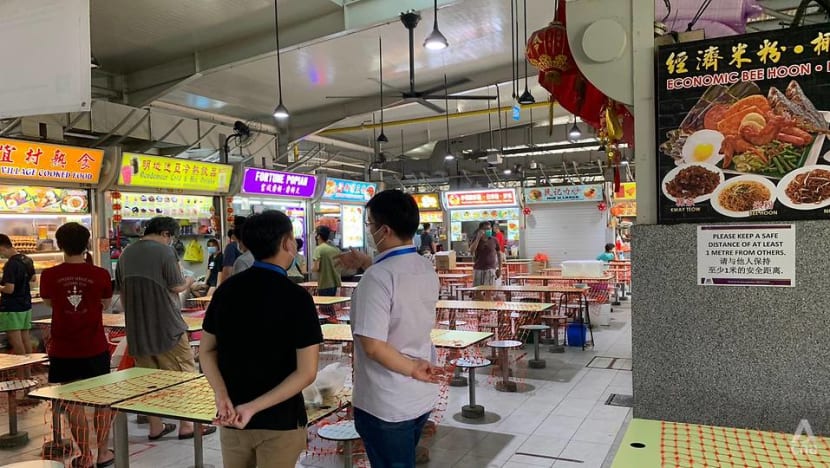Commentary: TraceTogether and SafeEntry were never foolproof in averting recent fishery port and KTV clusters
Don’t blame the technology. COVID-19 control technology depends on the cooperation of people to be fully effective, says SMU Professor Mark Findlay.

Tian Ya Hai Jiao KTV at Aliwal Street was found to have served alcohol past 10.30pm on Jan 10, 2021. (Photo: SPF)
SINGAPORE: Singapore has one of the best subscribed COVID-19 tracing, tracking and safe entry apps worldwide. Then how is it that we are back to Phase 2 (Heightened Alert)?
It would be tempting but wrong to blame the technology as being insufficiently intrusive or robust.
A look at the recent outbreak suggests we should avoid an over-reliance on tech solutions when incompatible human behaviours are at work.
READ: Commentary: COVID-19 has exposed our lack of digital inclusion
PEOPLE CAN TURN OFF BLUETOOTH SIGNAL
The KTV cluster is a case in point. Most of these lounges are located in malls and commercial precincts.
TraceTogether-SafeEntry (TT/SE) check-in is only required into the complex and not the individual retail premises since mid-May.
Though its use is mandatory, there is also nothing stopping someone from turning off the Bluetooth on their phone after they have scanned at the entry point thus disabling the tracing capacity.
The token on the other hand remains active but it too must be engaged by close contact with a reader, which may not be presented when entering the lounge.
Once inside, if the proprietor allows customers to associate in violation of safe distancing and minimum occupancy protocols, and condones risky personal activity between customers and hostesses, where "butterflying” from one room to another exacerbates the risk of infection and spread, then tracing and tracking cannot identify these violations.
READ: Vice activities by some Vietnamese in Singapore not representative of residents here: Embassy official
Some KTV patrons may have complied and left TraceTogether on. However, pursuing these affected patrons via digital contact tracing will do two things: Expose the extent to which such surveillance technology is unable to uncover uncooperative patrons, and more importantly cause strain among family members unaware of the visit to these establishments, for reasons other than having “food and beverage”.
But once authorities have identified patrons, this information can be supplemented by wider testing and the use of additional pandemic surveillance methods such as wastewater surveillance to draw a larger circle and test people living in the vicinity of suspected cases to respond more swiftly.
(Why not allow dining in for those vaccinated when MICE and other big events can continue? Public health experts discuss whether new rules mean prior plans to live normally with COVID-19 will shift on this week’s Heart of the Matter podcast.)
A CHAIN OF TRANSMISSION AT THE MARKETS
The fishery port cluster also shows the limitations of technology. Securing the entire chain of supply assumes enforcement of strict TraceTogether regimens starting at the docks.
Delivering fish to wet markets means one person could easily spread an infection to many fishmongers, who in turn come into contact with many patrons.
Popular wet markets (like Geylang Serai Market, Chong Pang Market and Food Centre) and supermarkets have had to deploy additional control measures since last year on occasion to manage crowds.
For instance, from Apr 22, 2020 to Sep 12, 2020, four markets saw weekend restrictions imposed where entry was based on the last digit of people's IC number.
READ: Commentary: Singapore needs a new Smart Nation vision that doesn't leave any citizen behind
While SafeEntry was deployed, it is not mandated, at least not until the recent outbreak. In some places, up until May, people could still rely on their NRIC and non-TraceTogether apps to check into these areas.
Safe distancing has also been neglected on occasions, as long queues have been observed, especially during weekends and peak periods.
HAWKER CENTRES COULD BE NEXT
Hawker centres could be another hotspot. Unlike other F&B outlets, most hawker centres do not have a designated entry and exit layout.

With many entry points, these places have "porous settings", and safe distancing ambassadors would be hard-pressed to enforce TT/SE measures in spaces that are unfenced.
Three factors appear to be at work behind why TT/SE was previously not required in hawker centres and wet markets.
First, many seniors tend to congregate at hawker centres, and prior to the mandatory use of TT/SE, many refused or were reluctant to use the apps or tokens, presenting difficulties in enforcing any TT/SE measures.
Second, up until May, only F&B outlets that served dine-in customers had to implement TT-only SafeEntry check-ins. Wet markets, which do not have dine-in facilities, fell outside of this purview.
Because of dining-in restrictions and suspensions, most people would have had their food picked up or delivered which should technically mean fewer at the hawker centres. Plus, they do not have to use TT/SE at the hawker stalls.
Third, the open-air environments of wet markets and hawker centres may have had better airway circulation compared to enclosed air-conditioned malls which are considered to have less natural ventilation.
READ: Commentary: Hawkers and food delivery riders deserve more appreciation
READ: TraceTogether check-in to be mandatory at all wet markets and hawker centres in Singapore
Now, with infection rates climbing, any unregulated F&B environment, particularly those that attract seniors, is at as much risk because of the absence of a tech safety net.
COMPLIANCE WITH TECH PROTECTIONS NEEDED
There is a rethinking of this reasoning in the face of an exploding Jurong Fishery Port cluster which has 541 cases as of Thursday and talk of more vigorous tracking, tracing and testing.
The concern is particularly for the unvaccinated elderly who enjoy congregating unrestrained in these risky environments and may find more difficulty fiddling with new safety technologies.
The unfortunate consequence of all these unregulated risk centres is that businesses that have been strenuous in seeing technology applied vigorously are also caught up in lockdown.
READ: Commentary: Why many retailers are calling for a circuit breaker

It is a time to reflect on the importance of goodwill and cooperation between control technology and human behaviour.
Vaccines and control technologies on their own, without positive and consistent human engagement, will not be enough to defeat the pandemic.
Diligent and equitable compliance with technological protections provided through apps like TT/SE, no matter what the cultures of occupancy are in all settings where there are congregating groups and crowds of people, are a must.
Professor Mark Findlay is Director, Centre for AI and Data Governance, Singapore Management University.















